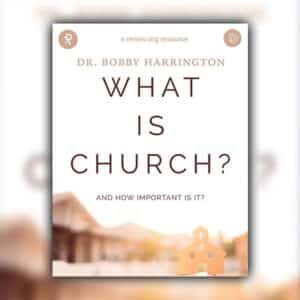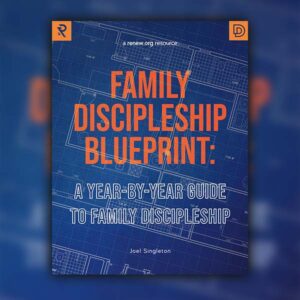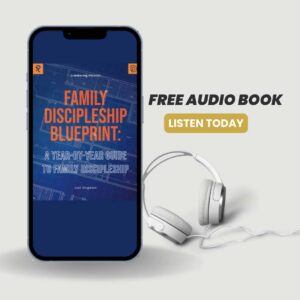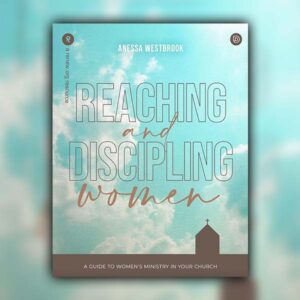WHAT’S GONE WRONG WITH THE HARVEST?

From 1974–1988 I served on the staff of Athletes in Action (AIA) and had the once-in-a-lifetime opportunity to be Chaplain of the Pittsburgh Steelers. The Steelers began their dynasty during those years, winning four Super Bowls in our first six years with the team. I take no credit for those Super Bowl championships, but then again, they can’t blame me for anything!
I was sent out by AIA as part of the pioneering effort to penetrate the world of professional sports with the gospel. Our mission was to win pro athletes to Christ, build them in their faith, and send them out to win and build others.
We launched a Chapel service on game day that grew from four or five in attendance to 25 to 30 by year two. I met individually with players for discipleship and my wife and I started a mid-week Bible study for Steeler couples. Within a few years, we were leveraging the unique platform of sports to share the gospel with outreaches to high school kids, college students, business professionals, and even prisoners. There was almost nowhere that was off-limits to the Steelers.
One of the most amazing outreach opportunities we had was going into high schools and doing “Super Star Competition Assemblies.” Given the current political climate, it’s hard to imagine, but in the mid-1970s to the early 1980s, the Steelers could even open the doors to the public school system. We did hundreds of these assemblies in the tri-state area. A typical assembly would consist of a relay race, a volleyball game, a home run relay with a wiffle ball, a sit-up contest, and a tug-of-war with four or five Steelers competing against the high school’s top athletes. In between events I would act as emcee and do brief two-minute interviews with the pros on their football experience and their Christian faith. I would then close the assembly by sharing a brief gospel presentation (keyword “brief”) and invite kids to pray a prayer of invitation to ask Jesus to come into their lives. It always felt a bit awkward to try and pack such important matters into such a fast-paced assembly but that was the way I had been trained to share the gospel (i.e., gather a crowd, share the Four Spiritual Laws, close with a “pray with me,” and ask hearers to indicate their interest level on a four by six card).
I remember one particular drive back to Pittsburgh after one of our assemblies. There were four of us in a van and Tunch Ilkin, an All-Pro Steeler lineman, was going through the index cards and reading some comments. I asked Tunch, “How many decisions were there at that high school?” Tunch shot back, “632 made decisions and 3 were saved!” Interestingly, all of us in the car laughed because we all knew that there was no way that 60% of the kids in the gym that morning had decided to become Christians! We even had a standing joke that went like this. “632 made decisions, but were still trying to figure out exactly what they decided!”
Amongst ourselves, we talked about the phenomena of people praying prayers at these events. We knew something was wrong. At one point we decided to stop using the language that “X number of people prayed to become Christians” and changed it to “X number of people asked for the free material.” I even changed the closing prayer from an invitation to receive Christ to an invitation to become a seeker.
At one point, I came across a book titled What’s Gone Wrong with the Harvest? The author, James Engle, makes the point that evangelicals put so much focus on the point of conversion that we minimize the process that leads us to conversion.1 In the process we often precipitate premature decisions. This made total sense to me. Kids in the assemblies were not making genuine decisions to repent of their sins, trust in Jesus as their Savior, and follow Him as Lord (i.e., boss) of their life. They were simply expressing “I thought the assembly was cool.” Or at best, “I’d like to invite Jesus into my life as a ready help in time of need.” But this is a far cry from the biblical notion of conversion.
Engle’s book went on to explain that the kind of outreaches we were doing was a kind of pre-evangelism that had different goals and could be represented by a simple continuum of -5 to -1 on the left side of the cross and +1 to +5 on the right side.

The goal of this “pre-evangelism” was to create interest, destroy stereotypes, and lay a foundation of gospel facts. In short, to create movement toward a genuine life-altering conversion. That was exactly what our assemblies could do, and quite effectively. We could penetrate areas of culture that many evangelistic efforts could not, we were arousing interest, and presenting key gospel facts. Most importantly, we were creating a movement from apathy, hostility, and indifference to, openness, curiosity, and even seeking. We all understand that there is a process on the other side of the cross from spiritual infancy to spiritual childhood, spiritual adolescence, and spiritual adulthood. We must also keep in mind that there is another process that takes place on the way to the cross. Jesus said, to the rich young ruler, “You are not far from the kingdom of God…”, indicating degrees of furtherance (Mark 12:34).
But this brings us to the bigger problem. It’s still very easy in our evangelistic culture to get the gospel wrong or so abbreviated, that we continue to precipitate false conversions. This is particularly dangerous because people delude themselves into thinking they are Christians because they have “invited Jesus into their life,” walked an aisle, raised their hand, checked a response card, or some similar minimal transaction.
The Puritans had a saying that we should take heed of, “It’s possible to be awakened by the Spirit and not regenerated by the Spirit.” I’ve spent enough time in comfortable evangelical churches to realize that stimulating Bible teaching, great music ministry, and attractive programming can illicit good vibes and positive feedback without bringing a person to repentance, faith, and a life of following Jesus.
After my stint with the Steelers, I became a pastor and church planter and observed the same kind of problems with the way we do church. Our gospel presentations are often so abbreviated as to be dangerous and our discipleship efforts are so superficial as to be ineffective.
Fast forward with me now to 2019 when I attended The National Disciple Making Forum in Nashville, TN. I heard the four breakout sessions by The Bonhoeffer Project’s co-founder, Bill Hull, and other Bonhoeffer leaders. I walked out of the last session and said, “Lord, you have just answered a long-standing prayer to understand what we’re doing wrong and how we can correct it.” Let me summarize as best I can what I learned in those two days. We’ll only scratch the surface in this column but stay tuned for upcoming columns where we’ll dive deeper. Here’s the core issue that will help us get started with the question, “What is the gospel?”
THE BIG IDEA
“The gospel you preach will determine the disciples you make.”3
Our country (and the world, because we export our gospel) is awash in cultural gospels.
What the forgiveness-only gospel, the gospel of the left, the prosperity gospel, the consumer gospel, and the gospel of the right all have in common is that they focus on self. It’s all about me being forgiven, me going to Heaven, me feeling good about my good deeds, me being healthy and wealthy, me getting my needs met, and me being right about every doctrinal nuance.

The uniqueness of the biblical kingdom gospel is that the focus has changed from me/self to God and others.
You see it clearly in Jesus’ encounter with the rich young ruler.
“What must I do to be saved? asked the Rich Young Ruler. Jesus replied, If anyone would come after me let him deny self, pick up his cross, and follow me. For whoever wants to save his life must lose it. And whoever loses his life for my sake will save it.”
Luke 9:23-24
As Bill Hull pointed out, Jesus never asked anyone to “pray a little prayer,” he said “Follow me”.5 Notice Jesus’ call to Matthew (Matthew 2:14), Peter and Andrew (Matthew 4:18-20), Phillip (John 1:43), James and John (Mark 1:19-20), and the three would-be disciples, (Luke 9:57-62).
The biblical gospel cuts to the heart of the problem which is our focus on self and calls us to deny self, surrender our will to Christ, and follow him.
FOOTNOTES
1 James F. Engel and Wilbert Norton, What’s Gone Wrong With The Harvest?, Zondervan,1975
2 Adapted from The Engle Scale, James F. Engel and Wilbert Norton, What’s Gone Wrong With The Harvest?, Zondervan, 1975 print (45)
3 Bill Hull & Ben Sobels, The Discipleship Gospel: What Jesus Preached We Must Follow, HIM Publication, 2018, p. 24
4 Bill Hull, Conversion and Discipleship: You Can’t Have One Without The Other, Zondervan, 2016, p. 33
5 Bill Hull and Ben Sobels, The Discipleship Gospel: What Jesus Preached We Must Follow, HIM Publication, 2018, p. 80
This post originally appeared at: What Has Gone Wrong with the Harvest? — The Bonhoeffer Project
Check out these great resources!
You can listen to a new FREE audio resource and learn about what it means to be a disciple making church by clicking here: National Study: The State of Disciple Making Churches Free Audiobook
You can download a free 10-minute visual guide of the study here: National Study: The State of Disciple Making Churches: A 10 Minute Visual Guide
You can also download a free eBook copy of the full report here: National Study on Disciple Making in USA Churches
Interested in a free eBook on Disciple Making Metrics? Check out our free Disciple Making Metrics eBook
If you have enjoyed reading this, please consider joining our email list!











